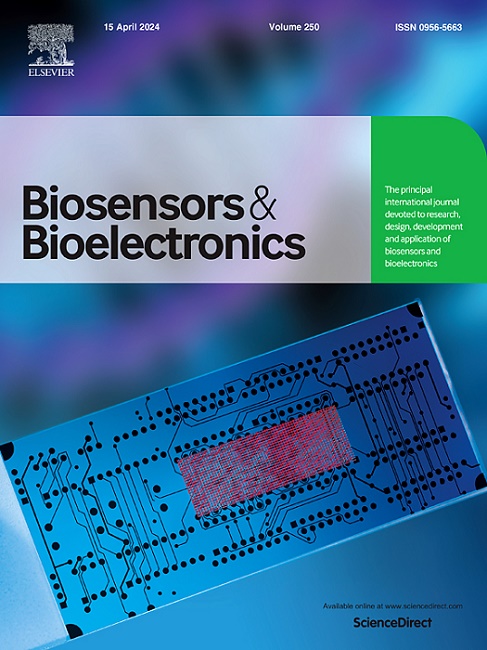利用表面增强拉曼光谱,深度学习实现了开放式细菌识别
IF 10.5
1区 生物学
Q1 BIOPHYSICS
引用次数: 0
摘要
准确的细菌鉴定在医疗和保健环境中至关重要。传统方法虽然可靠,但往往耗时,因此需要更快、更有效的替代方法。深度学习辅助表面增强拉曼光谱(SERS)提供了一种快速、灵敏的方法,在细菌鉴定中具有很高的准确性。然而,目前用于细菌SERS光谱分类的深度学习模型通常在封闭集范式下运行,这限制了它们在遇到训练集之外的细菌物种时的有效性。为了应对这一挑战,我们提出了一种基于变压器的神经网络,用于使用SERS光谱进行开集细菌识别。我们的模型结合了分类和重建任务,通过分析重建误差来拒绝未知物种。实验结果表明,该模型在对已知物种进行分类和拒绝未知物种方面均优于传统的开放集识别方法。这项研究解决了现有闭集方法的局限性,提高了细菌识别在现实世界中的稳健性,并展示了将SERS与变压器模型集成到医疗和保健应用中的潜力。本文章由计算机程序翻译,如有差异,请以英文原文为准。

Deep learning enabled open-set bacteria recognition using surface-enhanced Raman spectroscopy
Accurate bacterial identification is vital in medical and healthcare settings. Traditional methods, though reliable, are often time-consuming, underscoring the need for faster, more efficient alternatives. Deep learning-assisted Surface-enhanced Raman spectroscopy (SERS) offers a rapid and sensitive method, demonstrating high accuracy in bacterial identification. However, current deep learning models for bacterial SERS spectra classification typically operate under a closed-set paradigm, limiting their effectiveness when encountering bacterial species outside the training set. In response to this challenge, we propose a transformer-based neural network for open-set bacterial recognition using SERS spectra. Our model utilizes a combination of classification and reconstruction tasks, rejecting unknown species by analyzing reconstruction errors. Experimental results show that the proposed model outperforms traditional open-set recognition approaches, providing superior accuracy in both classifying known species and rejecting unknown ones. This study addresses the limitations of existing closed-set methods, improving the robustness of bacterial identification in real-world scenarios and demonstrating the potential of integrating SERS with transformer models for medical and healthcare applications.
求助全文
通过发布文献求助,成功后即可免费获取论文全文。
去求助
来源期刊

Biosensors and Bioelectronics
工程技术-电化学
CiteScore
20.80
自引率
7.10%
发文量
1006
审稿时长
29 days
期刊介绍:
Biosensors & Bioelectronics, along with its open access companion journal Biosensors & Bioelectronics: X, is the leading international publication in the field of biosensors and bioelectronics. It covers research, design, development, and application of biosensors, which are analytical devices incorporating biological materials with physicochemical transducers. These devices, including sensors, DNA chips, electronic noses, and lab-on-a-chip, produce digital signals proportional to specific analytes. Examples include immunosensors and enzyme-based biosensors, applied in various fields such as medicine, environmental monitoring, and food industry. The journal also focuses on molecular and supramolecular structures for enhancing device performance.
 求助内容:
求助内容: 应助结果提醒方式:
应助结果提醒方式:


